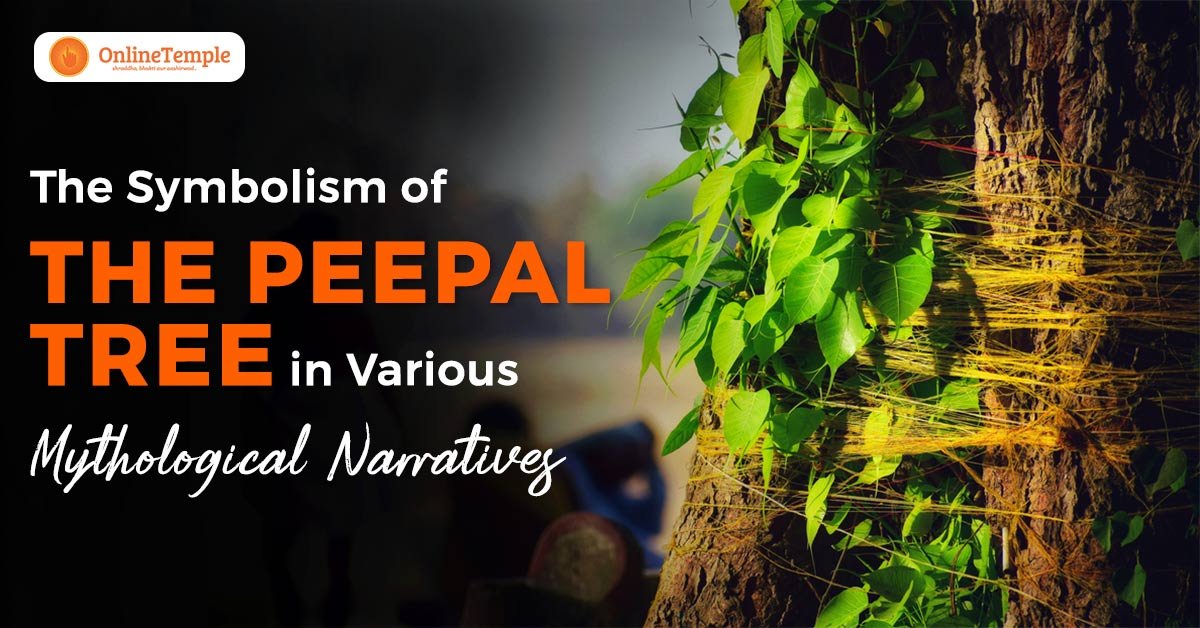India, a nation immersed in mythology, civilization, and history, has a distinctive connection with its surroundings. Ficus religiosa, also known as the peepal tree, is one of the most revered trees in Buddhism, Jainism, and Hinduism. It is regarded as a symbol of protection, as well, as enlightenment. In addition, make sure to browse the Online Temple to book the best Hindu online puja services.
The appreciation of the Peepal tree (Ficus religiosa) is the finest way to understand the deep spiritual and cultural ties to the environment that are common in Indian culture. India’s spiritual, social-cultural, and natural ecosystems depend on the peepal, a well-known variety of fig trees. Now, let’s analyze the significance of peepal trees in greater detail considering the elements listed below.
Why Do People Water Peepal Trees and When Is It Typically Done?
The Atharva Veda and the Chandogya Upanishad relate the peepal tree to God’s paradise. Hindus believe that Lord Vishnu, who is half Lakshmi, resides on this tree on Saturdays. Hindus hold this notion, which is why every Saturday people believe it’s great to pour water down the tree’s roots.
The tree that is believed to have served as the venue for the councils of Lord Shiva, Brahma, and Vishnu is also considered sacred by Hindus. The trunk represents Vishnu, the foliage represents Lord Shiva, and the roots represent Brahma. As the “Brahma Purana” claims that Lord Vishnu was born beneath a peepal tree, the peepal tree also represents Lord Vishnu.
According to Lord Krishna, Ashwatta is represented by the peepal tree, and he passed away beneath it during the Kalyug. The peepal tree circumambulation holds great significance as it is thought to confer fertility and attract the perfect life partner for a lady.
Cultural Significance of Peepal Tree In Different Religions
The sacred Peepal tree has great religious significance in three major religions that originated on the Indian subcontinent: Jainism, Buddhism, and Hinduism. This plant is considered sacred by Hindu and Jain ascetics, who often choose to meditate under its branches.
1. Hinduism
The peepal tree is highly valued in Hinduism not only for its ecological significance but also for its unique role in Indian mythology and religious rituals. In Hinduism, trees are often worshipped and connected to the three Gods, Shiva, Vishnu, and Brahma, where Shiva represents the leaves and Brahma represents the roots.
It is said to be the residence of Vishnu and is a symbol of wealth, fertility, and life. During religious ceremonies, the Peepal tree is adorned with threads, statues, and portraits of the gods. People wrap white, red, and yellow silk threads around the tree, which stands for peace and enlightenment, to achieve their dream of motherhood and offer prayers for children. Also, you can visit the official page of the Online Temple to book yourself special online puja services.
2. Buddhism
The peepal tree is very sacred, especially to Buddhists who see it as a Buddha figure. According to legend, Buddha became enlightened while meditating under the peepal tree. The venerated tree’s leaves are used in religious rites.
As per the teachings of Buddha, anybody who worships the Peepal tree receives identical benefits as if they paid tribute to him in person. The Bodhi tree at Bodh Gaya, Bihar, is a well-known and cherished pilgrimage site for people from all over the world. It is an important cultural and religious monument.
3. Jainism
The peepal tree is highly honored in Jainism as the tree of the first Jain Tirthankara, Rishabhanatha, who attained enlightenment under its shade. It is therefore often planted next to Jain temples and is considered a sacred tree.
It is thought that going around the tree in a clockwise direction brings good fortune. Due to its frequent use for religious ceremonies and festivities, the tree also has a significant deal of religious importance. Peepal trees are frequently planted next to temples and other places of worship because of their protecting characteristics. Planting and caring for these trees is regarded as a noble gesture.
Benefits of Having Peepal Tree Leaf in the Home According to Vastu
The peepal tree is situated in the Vastu orientation, facing eastward from the home. After being planted for eight, eleven, or twelve years, the tree receives the Upanayana Ceremony. The tree and basil plant get married once all ceremony formalities are finished.
It is important to place the tree in the pot and to leave the tree’s roots intact. Vastu Shastra states that since the God and Goddess live in trees, they should be regularly worshipped day and night.
Those who revere the tree ought to lead austere lives. It is not recommended to put peepal trees inside of a house because of this. If a tree has grown naturally, it should be respectfully moved to a pot and frequently worshipped.
Wrapping Up
The worship of the peepal tree, which represents life and spiritual connectivity, has its roots in ancient traditions. Beyond its religious significance, it has significant health and environmental advantages. Embracing the peepal tree’s importance can enhance one’s physical and mental well-being by combining age-old wisdom with modern benefits. Additionally, you can browse Online Temple to book online Puja for wealth and prosperity.
Also Read: Peepal Puja Remedies: Proper Way to Offer Water to Peepal Tree

